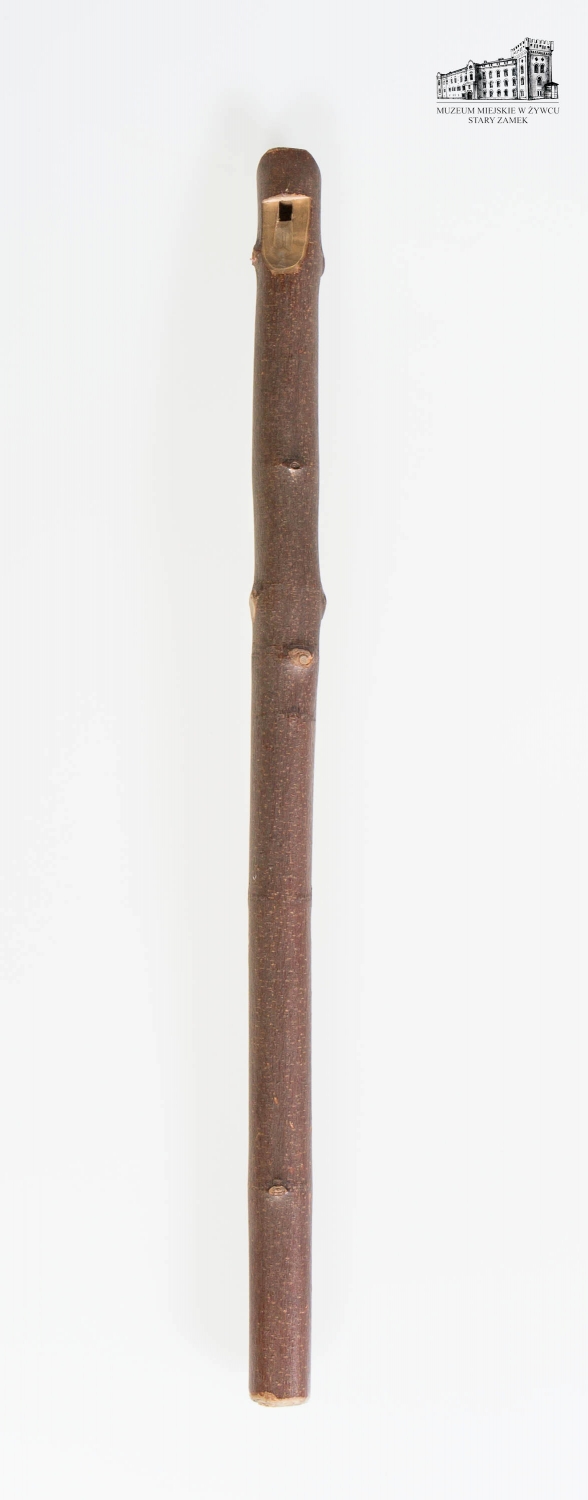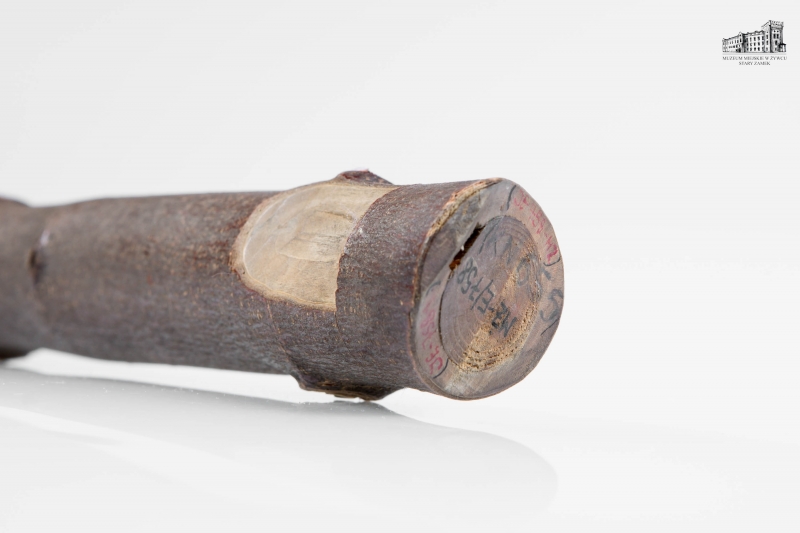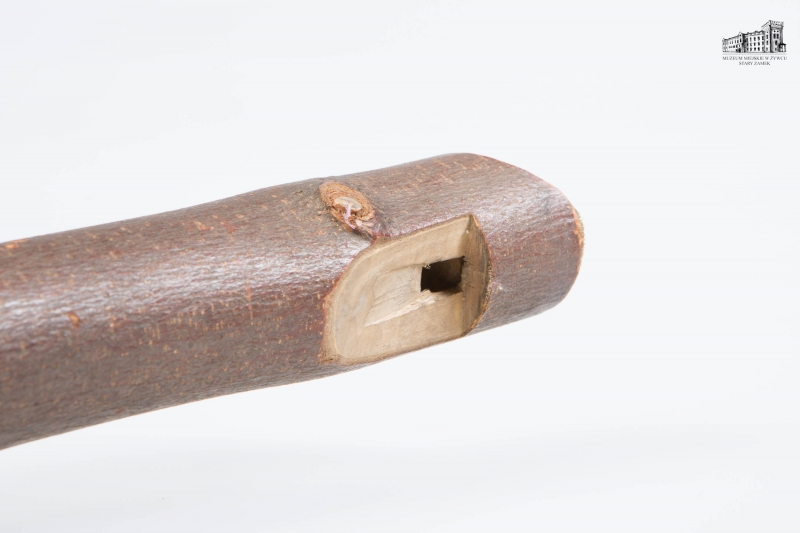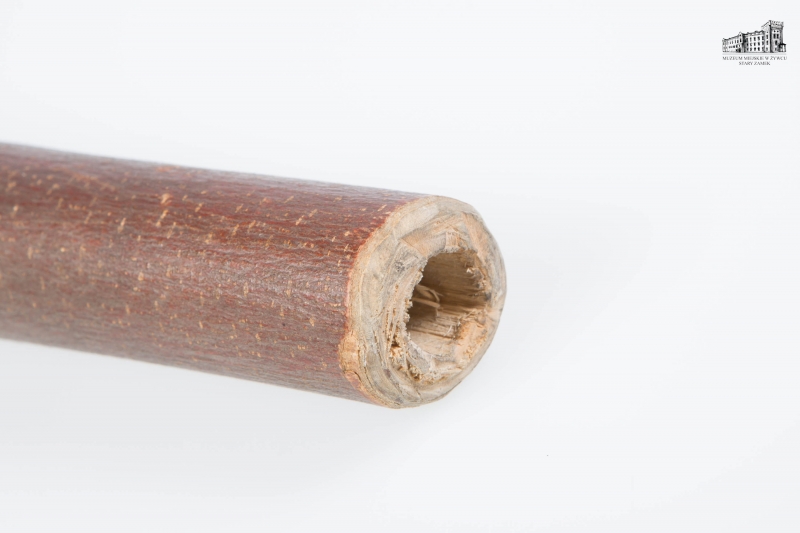pipe without fingerholes
pipe without fingerholes
Local name: piscoła, piscoła postna, piscoła wielkopostna, piscoła pasterska, piscołka, piscàłka, fujara, fujarka, fulyraClassification: 4 Aerophones / 42 Wind instruments proper / 421 Edge instruments or flutes / 421.2 Flutes with duct or duct flutes / 421.22 Flutes with internal duct / 421.221 (Single) flutes with internal duct / 421.221.1 Open flutes with internal duct / 421.221.11 Open flutes with internal duct without fingerholes
Maker: Szczotka Franciszek
Date: 1966
Village / Town: Milówka
Region: the Carpathian region (Beskid Żywiecki)
Country: Poland
Owner: The Municipal Museum of Żywiec – The Old Castle, Department of Ethnography
Inventory number: MŻ-E/758
Description: body made from a straight tree branch covered with bark
Measurements: 680 mm
Materials: wood
Sound compass, tuning: the player may produce individual sounds of a harmonic series (aliquots) by increasing or reducing the force with which he blows air into the duct and by opening or closing the flute's end with a finger; tuning depends on the pipe's length
Performance practice: during the Lent playing musical instruments was not allowed (especially those used to accompany dance), except for pipes without fingerholes; on Good Friday, when church bells went silent, young boys would run around the village playing pipes made of hawthorn (a reference to Christ's crown of thorns); the pipes were traditionally made and played by shepherds
Catalog card by: The Municipal Museum of Żywiec / Zbigniew Jerzy Przerembski
<< Back












